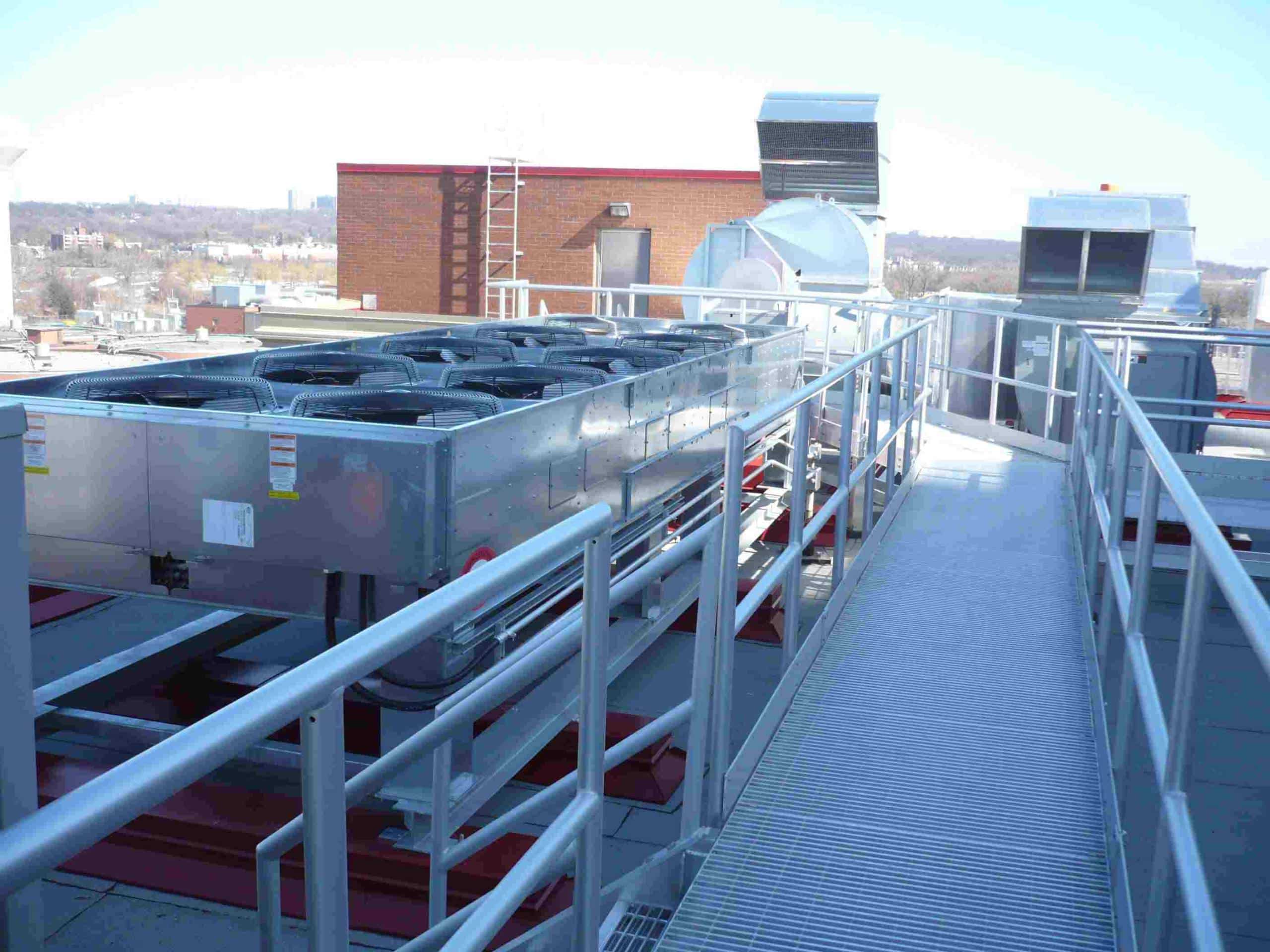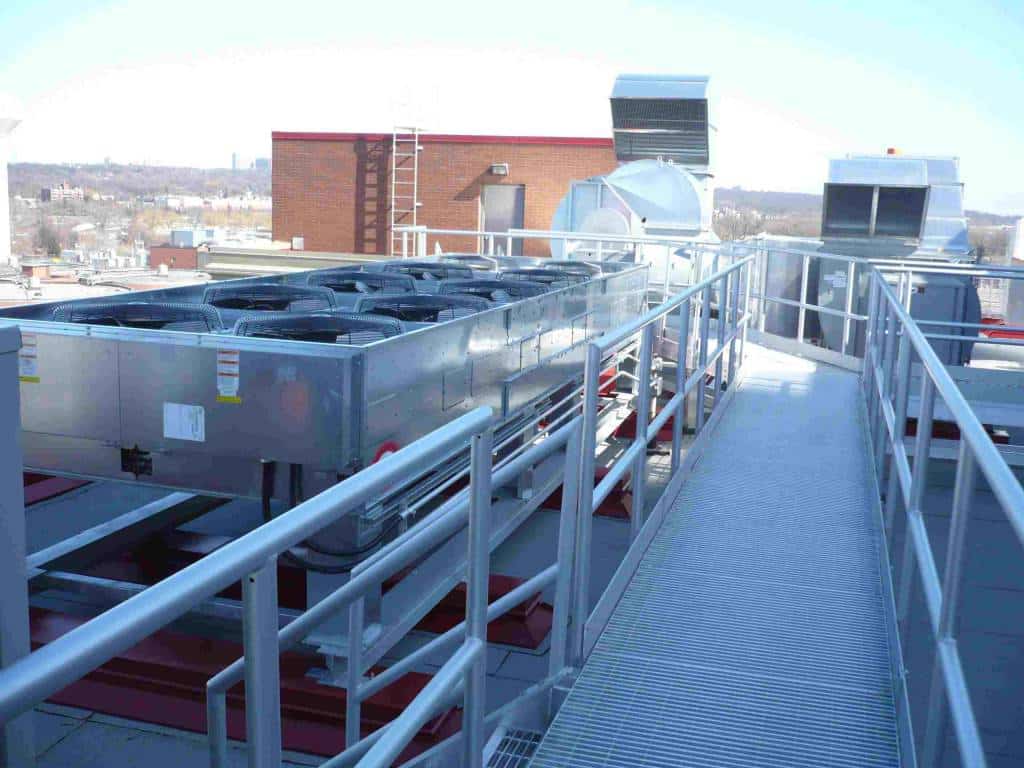For more than 100 years, people and companies have enjoyed the work of Willis Carrier. Back in 1902, Willis invented the first modern air conditioning system. His invention changed the course of manufacturing and commerce, not to mention the humble homeowner. One market that benefitted was Hollywood. People flocked to air-cooled theaters to escape the heat, leading to many blockbuster movies and Hollywood’s Golden Age. Even today, manufacturers benefit from this invention as employees can perform their tasks comfortably, and equipment doesn’t have to overheat.
Have you ever wondered, ‘How does an air conditioner work?’ Even though technology has made more efficient units, these systems still operate under the same basic principles from 100 years ago. Today, more than ever, an experienced commercial heating and air conditioning company has what you need to ensure your HVAC systems continue to work efficiently.
Understand the Basics of How Air Conditioning Works
Many believe their air conditioning systems make cold air. That is an incorrect assumption. Using an evaporator, compressor, and condenser, the units remove heat from inside your building and transfer it outside. Here is an overview of how your air conditioner cools the interior of your facility:
- The thermostat controls the space temperature based on the set point. Once the space temperature rises above the setpoint, the cooling process starts, and the compressor and system fans are turned on.
- Warm air is drawn across the evaporator coil. The air moves through the return air duct and across the system filters, while the filtered warm air moves across the evaporator coil.
- The evaporator converts the liquid refrigerant to a gas. As the warm air passes over the evaporator, the liquid refrigerant absorbs the heat from the air and in the process cools the air. When the refrigerant leaves the evaporator coil, it evaporates into gas, no longer in a liquid state. The cool air is then circulated through the supply air ducts to cool the space.
- The condenser converts the heated gas to a liquid. Both the compressor and condenser are located outside. The warm refrigerant gas is drawn through the copper piping into the compressor and is pressurized and pumped into the condenser coil where the condenser fan draws outdoor air across the condenser coil, the heat that the refrigerant absorbed from the space is rejected into the atmosphere. During the process, the refrigerant condenses back into a liquid state leaving the condenser.
- The refrigerant travels back to the evaporator. The refrigerant travels to the metering device that regulates the flow of refrigerant through the evaporator. The cooled refrigerant then absorbs more heat from the space as the cycle continues until the compressor is turned off by the thermostat as it reaches the set temperature.
Choose a Reliable Company for Your Commercial Air Conditioning Needs
Make sure your manufacturing plant and office buildings are cooled efficiently by choosing a reliable commercial heating and cooling company that can handle all your HVAC needs, including installation, maintenance, and repairs. Our knowledgeable technicians have the training to efficiently conduct your routine, corrective, and emergency HVAC maintenance needs. Through our scheduled maintenance program, we will assess your system and take care of any repairs or maintenance items to extend your system’s lifespan. Discover more about us and our services as one of the region’s most established commercial HVAC companies Toronto.
Call us at 905-470-2424 or contact us online for your energy-efficient commercial and industrial heating and cooling system installation, service, or repair.1. How Does an Air Conditioner Work?
Learn about the fundamental principles behind air conditioning, including the roles of the evaporator, compressor, and condenser in cooling indoor spaces efficiently.
2. Why Doesn’t an Air Conditioner Produce Cold Air?
Understand the misconception about air conditioners producing cold air and discover how these systems effectively remove heat from your building’s interior.
3. What Is the Significance of the Thermostat in Air Conditioning?
Explore the crucial role of the thermostat in regulating the temperature within your space and initiating the cooling process when needed.
4. How Does the Evaporator Coil Cool the Air?
Delve into the process of how the evaporator coil converts liquid refrigerant to gas, absorbing heat from the air and circulating cool air throughout your building.
5. What Is the Function of the Condenser in Air Conditioning Units?
Understand the condenser’s role in converting heated gas back into a liquid state, ensuring efficient heat dissipation from the refrigerant to the atmosphere.
6. Why is Regular HVAC Maintenance Essential?
Discover the importance of routine maintenance provided by experienced commercial heating and cooling companies, ensuring optimal performance, energy efficiency, and system longevity.
7. How Can I Choose the Right Commercial Heating and Cooling Company?
Get insights into the criteria for selecting a reliable HVAC service provider, covering aspects such as installation, maintenance, repairs, and emergency services.
8. What Does a Scheduled Maintenance Program Entail?
Learn about the benefits of a scheduled maintenance program, including system assessments, repairs, and maintenance tasks, aimed at extending your HVAC system’s lifespan.
9. How Can I Contact a Reliable Commercial HVAC Company?
Find out the convenient ways to get in touch with a trusted commercial heating and cooling company, including phone numbers and online contact options for inquiries, installations, services, and repairs.






